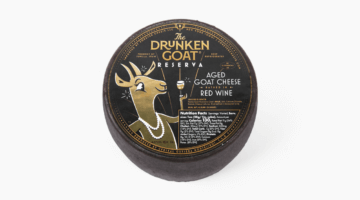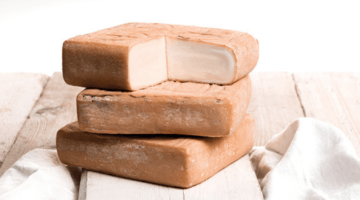Celebrate the Canary Islands!

A Day to Celebrate
In honor of one our newest cheeses, Alisios®, and its island home, Fuerteventura, we are celebrating an important holiday today. May 30, El Día de Canarias, or Canary Island Day, is a yearly holiday celebrating the unique community and culture that the islanders have built over hundreds of years. We are very excited to be working closely with our producer there to introduce their cheeses to the U.S. so we can all have the opportunity to celebrate the Spanish archipelago. It’s an incredible place, culturally, geologically, and cheese-wise, and we are happy to have established a great partnership there!
The Canary Islands are a group of volcanic islands west of Morocco. The name has nothing to do with birds, surprisingly, though the true origin is not quite known. It may have to do with dogs instead, from the Latin canariae inusale, meaning “island of the dogs.” It’s also suspected that the first inhabitants, the Guanches, considered dogs sacred and mummified them like humans. Some think that the island wasn’t overrun with dogs at the time of its naming but with monk seals, known as canis marinus (sea dogs). Either way, dogs are tied to the origin of the islands and are commemorated on the region’s flag.
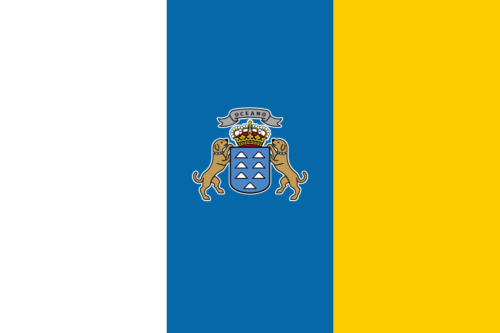
The seven main Canary Islands are Tenerife, Fuerteventura, Gran Canaria, Lanzarote, La Palma, La Gomera, and El Hierro. The difference in landscape on each of them is astounding – you can find desert, a 12,000 ft volcano, beaches, forests, and lagoons. In fact, each island has its own distinct microclimate, often influenced by the pervasive trade winds. These microclimates are very important to the island cheesemaking as the land, air, and microflora of each island is unique and influences the taste of the milk and the aging of the cheese. We are lucky to be able to have a taste of the islands here, having traveled a long way, bringing with it its distinct terroir and flavor.
Wednesday, May 30 is a public holiday in the Canary Islands celebrating the southernmost autonomous community in Spain. The day marks the anniversary of the region’s first parliament session in 1983. Celebrations span across all the islands, with parties, food and wine, music, traditional dance, parades, agricultural fairs, and regattas. Cities and small towns explode with color from flags and flowers decorating every balcony. Awards are presented by the government in categories from literature to sports. It’s a day to honor the traditions of the past and commemorate what makes the islands unlike any other place in the world.
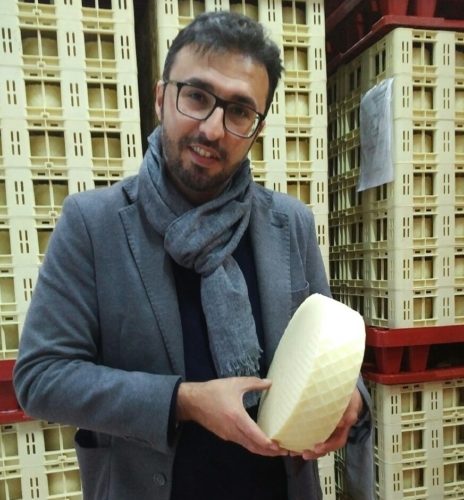
The producer connecting us to the Canary Islands is Grupo Ganaderos de Fuerteventura, a second generation family dairy. Esteban took over the cheese operations from his father and his brother Alfredo is in charge of the feed company the family also owns. Esteban studied civil engineering but jumped head first into the cheese business after his father gave him three days’ warning before his retirement. He has really grown the company in his 12 years there, and has helped local island farms thrive by buying their milk.
They now work closely with 40 farms on Fuerteventura, some quite small, and also own their own herd. All of the goats are the indigenous Majorero breed, whose milk is very creamy with a caramelized flavor and toasted aroma in cheese. The brothers’ father, Alfredo, was instrumental in establishing the DOP for Queso Majorero, a traditional cheese made with the milk, in 1996.

Besides Majorero, they make several other types of cheeses, many of which use traditional island methods for preserving the rind. For their mixed milk cheeses, they get cow’s milk from Gran Canaria, as Fuerteventura is not a hospitable island for cows, being quite dry and almost desert-like. Their cheeses, from Majorero to the pimentón covered Alisios, are closely tied to their island but have a universal appeal. These are their cheeses that we offer:
Alisios®
Like the trade winds it’s named after, Alisios could only be from this specific part of the world. The cheese is made with cow’s (70%) and goat’s (30%) milk and is covered in sweet pimentón from Murcia. This tradition comes from when cheese was preserved in the island’s red dirt. The pimentón does not affect the flavor much, but is certainly eye-catching and adds a lovely aroma. The paste is smooth and dense with few eyes. It is brothy, with deep toasted notes and light acidity from the goat’s milk. Truly original and enchanting. 6/2 lbs.
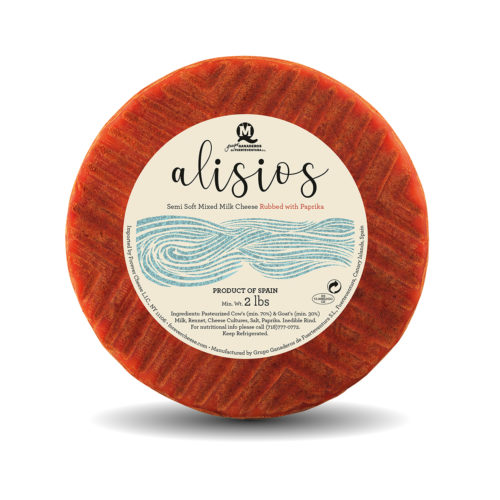
Maxorata (Queso Majorero DOP)
The perfect vehicle to showcase the creamy, protein-rich whole milk of the Majorero goat. One of the goats’ favorite foods is marjoram, which contributes to milk that is highly aromatic and dynamic. After aging 60 days, the cheese has a compact, slightly elastic texture, while maintaining a creamy mouthfeel. It’s milky, quite buttery for goat cheese, and has a pronounced tang in the finish. 2/8 lbs.
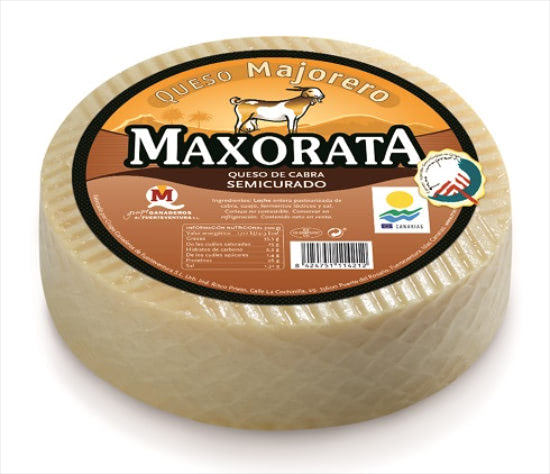
Maxorata Curado with Pimentón (Queso Majorero DOP)
An aged version of Majorero with a stronger flavor, coated in sweet Spanish pimentón. Aged around 90 days, the cheese is dense and somewhat crumbly with an intense goat flavor that is perfectly complemented by the smoky sweetness of the paprika. 2/7 lbs.
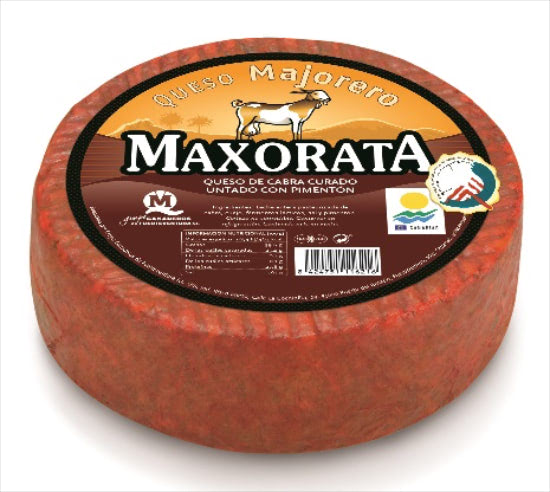
Although they are not yet in stock, we will be showing two new goat cheeses from Grupo Ganaderos de Fuerteventura at the Fancy Food Show this summer:
Goat’s Milk Cheese with Cornmeal
(Name TBD!)
Using a traditional method of coating the rind in toasted cornmeal, this goat’s milk cheese is striking in appearance and super approachable. Like all cheeses with Majorero goat’s milk, it is pleasantly milky with just a hint of goat funk. After 60 days of aging, it’s fairly elastic with a creamy mouthfeel. Endlessly snackable with a unique presentation!
The Smokin’ Goat
This cheese is made using the same base as its cornmeal cousin, but the affinage and final touches differ. Our producers age it for just 30 days, so that it has a semi-soft, velvety texture. They lightly smoke it to bring out the toastier notes in the goat’s milk. Like their other cheeses, this is a mild, crowd-pleasing wheel that is a great introduction to the flavor of the Canary Islands. It’s a perfect match with cured Ibérico meats.



